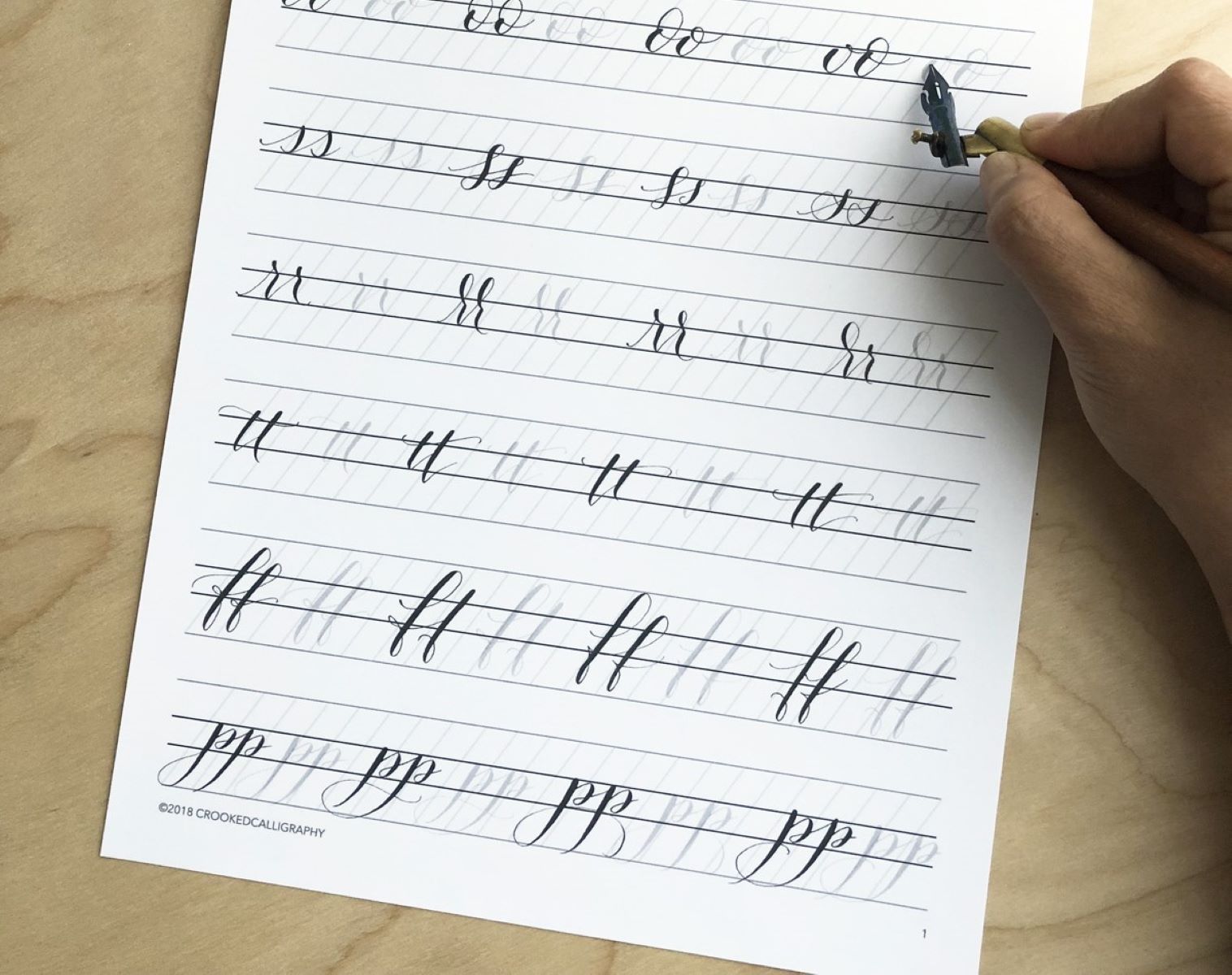Home>Language and Grammar>Mastering Double Object Pronouns In Spanish: The Ultimate Guide


Language and Grammar
Mastering Double Object Pronouns In Spanish: The Ultimate Guide
Published: January 25, 2024
Learn how to master double object pronouns in Spanish with our ultimate guide. Improve your language and grammar skills with expert tips and examples. Unlock the secrets of using direct and indirect object pronouns effortlessly.
(Many of the links in this article redirect to a specific reviewed product. Your purchase of these products through affiliate links helps to generate commission for Regretless.com, at no extra cost. Learn more)
Table of Contents
Introduction
Learning a new language can be an incredibly rewarding and enriching experience. It opens doors to new cultures, facilitates communication with a wider range of people, and sharpens cognitive skills. Spanish, in particular, is a beautiful and widely spoken language that continues to captivate learners worldwide. As one delves into the intricacies of Spanish grammar, one encounters various concepts that may seem daunting at first but become manageable with practice and guidance.
One such concept that often perplexes Spanish learners is the use of double object pronouns. Understanding and mastering double object pronouns is crucial for achieving fluency and precision in Spanish communication. This ultimate guide aims to demystify double object pronouns, providing comprehensive insights and practical exercises to bolster your proficiency in using them effectively.
Whether you're a beginner navigating the basics of Spanish grammar or an intermediate learner seeking to refine your language skills, this guide is designed to cater to your needs. By the end of this comprehensive exploration, you will have a solid grasp of double object pronouns and the confidence to wield them adeptly in your conversations and written expressions.
Embark on this linguistic journey with an open mind and a willingness to engage with the nuances of Spanish grammar. Embrace the challenges as stepping stones toward linguistic mastery, and let the knowledge gained here pave the way for seamless and eloquent Spanish communication. Let's unravel the intricacies of double object pronouns together, empowering ourselves to communicate with precision and fluency in the enchanting realm of the Spanish language.
What are Double Object Pronouns?
Double object pronouns, also known as double object pronoun combinations, are a fundamental aspect of Spanish grammar that streamline and enhance the efficiency of communication. These pronouns serve the purpose of replacing both the indirect and direct objects in a sentence, thereby avoiding redundancy and ensuring clarity in expression. In Spanish, the direct object pronouns represent the noun that directly receives the action of the verb, while the indirect object pronouns indicate the recipient of the action or to whom or for whom the action is performed.
In essence, the double object pronouns consolidate these two functions into a concise and cohesive form, enabling speakers to convey information with precision and brevity. By integrating both the direct and indirect object pronouns into a single entity, Spanish speakers can navigate complex sentences and convey nuanced meanings with remarkable efficiency.
These pronouns play a pivotal role in streamlining language and are indispensable for constructing fluid and natural-sounding sentences in Spanish. They enable speakers to convey intricate ideas and interactions with remarkable conciseness, contributing to the overall fluency and eloquence of the language.
Mastering the usage of double object pronouns is essential for achieving fluency in Spanish communication. As such, a thorough understanding of their function and placement is crucial for learners aiming to navigate the intricacies of Spanish grammar with confidence and proficiency. With the foundation laid by this comprehensive guide, you will be equipped to harness the power of double object pronouns, elevating your Spanish language skills to new heights.
Placement of Double Object Pronouns
In Spanish, the placement of double object pronouns within a sentence follows specific guidelines to ensure coherence and clarity. Understanding the correct positioning of these pronouns is crucial for effectively conveying the intended meaning. The placement of double object pronouns is primarily influenced by whether the verb is in the infinitive, gerund, affirmative command, or negative command form.
Placement with Infinitive Verbs
When an infinitive verb is used in a sentence, the double object pronouns can be placed before the conjugated verb or attached to the infinitive. For instance, "Voy a dártelo" (I am going to give it to you) and "Voy a dártelo" both convey the same meaning, with the double object pronouns "te" and "lo" placed together before the conjugated verb "voy" or attached to the infinitive "dar."
Placement with Gerund Verbs
In the case of gerund verbs, the double object pronouns can also be positioned before the conjugated verb or appended to the gerund. For example, "Estoy dándotelo" (I am giving it to you) and "Estoy dándotelo" both demonstrate the flexibility in placing the double object pronouns "te" and "lo" before the conjugated verb "estoy" or attached to the gerund "dar."
Placement with Affirmative Commands
When constructing affirmative commands, the double object pronouns are affixed to the end of the verb, forming a single word. For instance, "Dámelo" (Give it to me) combines the double object pronouns "me" and "lo" and attaches them to the verb "dar," creating a cohesive command that encapsulates both the direct and indirect objects.
Placement with Negative Commands
In the context of negative commands, the double object pronouns are placed before the conjugated verb, similar to their positioning in sentences with infinitive and gerund verbs. For example, "No me lo des" (Don't give it to me) and "No me lo des" both showcase the placement of the double object pronouns "me" and "lo" before the conjugated verb "des," ensuring clarity and coherence in the negative command structure.
Mastering the placement of double object pronouns in Spanish empowers learners to construct sentences with precision and fluidity, enhancing their communicative prowess and linguistic finesse. By internalizing the nuanced guidelines governing the placement of these pronouns, learners can navigate the complexities of Spanish grammar with confidence and dexterity, enriching their language proficiency and fluency.
Conjugation with Double Object Pronouns
Conjugating verbs in Spanish with double object pronouns involves a nuanced interplay between the pronouns and the verb forms, contributing to the precision and fluidity of communication. When integrating double object pronouns into conjugated verbs, it is essential to consider the impact on the verb endings and the overall coherence of the sentence structure.
In Spanish, the double object pronouns are directly attached to the conjugated verb, forming a unified entity that encapsulates both the pronouns and the verb. This amalgamation facilitates seamless communication and enables speakers to convey complex ideas with remarkable conciseness.
For instance, in the sentence "Ella me lo está dando" (She is giving it to me), the double object pronouns "me" and "lo" are affixed to the conjugated verb "está dando," creating a cohesive expression that succinctly conveys the direct and indirect objects within the context of the action.
The conjugation of verbs with double object pronouns extends to various tenses and moods, including the present indicative, preterite, imperfect, future, conditional, and subjunctive, among others. Each conjugation adheres to specific rules and patterns governing the integration of double object pronouns, ensuring grammatical accuracy and semantic coherence.
Furthermore, the conjugation with double object pronouns necessitates a meticulous consideration of the pronoun forms, verb endings, and the overall syntactic structure of the sentence. This comprehensive approach empowers learners to wield double object pronouns with finesse, enabling them to construct eloquent and precise expressions that resonate with native speakers and fellow learners alike.
By delving into the intricacies of conjugation with double object pronouns, learners gain a profound understanding of Spanish grammar and syntax, honing their linguistic acumen and elevating their communicative proficiency. This mastery fosters a deep appreciation for the intricacies of the Spanish language, empowering learners to engage with confidence and eloquence in diverse linguistic contexts.
In essence, the conjugation with double object pronouns represents a pivotal aspect of Spanish grammar, embodying the harmonious fusion of pronouns and verbs to create seamless and expressive communication. As learners navigate the complexities of conjugation with double object pronouns, they embark on a transformative linguistic journey, enriching their language skills and embracing the beauty of Spanish expression.
This thorough exploration of conjugation with double object pronouns equips learners with the tools to navigate the intricacies of Spanish grammar with finesse and precision, fostering a deep and enduring connection with the captivating realm of the Spanish language.
Common Mistakes with Double Object Pronouns
Mastering the usage of double object pronouns in Spanish entails navigating potential pitfalls and common errors that learners often encounter. By identifying and addressing these challenges, learners can fortify their understanding of double object pronouns and refine their language skills with precision and fluency.
One prevalent mistake involves the incorrect placement of double object pronouns in relation to the conjugated verb. It is essential to adhere to the specific guidelines governing the positioning of these pronouns, especially when the verb is in the infinitive, gerund, affirmative command, or negative command form. Misplacing the double object pronouns can lead to ambiguity and disrupt the coherence of the sentence structure, hindering effective communication.
Another common error pertains to the failure to match the gender and number of the double object pronouns with the nouns they replace. In Spanish, ensuring agreement between the pronouns and the replaced nouns is paramount for grammatical accuracy. Neglecting this agreement can result in linguistic inconsistencies and detract from the clarity and precision of the communication.
Furthermore, overlooking the distinction between direct and indirect objects when employing double object pronouns can lead to confusion and misinterpretation. It is crucial to discern the roles of direct and indirect objects in a sentence and select the appropriate double object pronouns accordingly. Failing to discern these roles may yield convoluted expressions that impede effective communication.
Additionally, an error often arises from the omission or redundancy of double object pronouns in sentences. Learners may either overlook the necessity of including double object pronouns or redundantly reiterate the indirect and direct objects, leading to superfluous and cumbersome language usage. Striking a balance and employing double object pronouns judiciously is pivotal for crafting concise and coherent expressions.
Moreover, a common mistake involves the inaccurate conjugation of verbs when integrating double object pronouns. Conjugating verbs with precision and aligning them harmoniously with the double object pronouns is crucial for maintaining grammatical integrity and semantic clarity. Inaccurate conjugation can undermine the effectiveness of the communication and detract from the overall fluency of the language usage.
By recognizing and rectifying these common mistakes, learners can fortify their command of double object pronouns, elevating their proficiency in Spanish grammar and communication. Embracing these insights empowers learners to navigate the intricacies of double object pronouns with confidence and finesse, fostering a deeper appreciation for the nuances of the Spanish language.
Practice Exercises for Mastering Double Object Pronouns
-
Sentence Reconstruction: Rearrange the following sentence using double object pronouns: "Juan dará el regalo a María."
Reconstructed Sentence: "Juan se lo dará."
-
Verb Conjugation: Conjugate the verb "escribir" (to write) in the present indicative and incorporate the double object pronouns "te" (you) and "la" (it, her).
Conjugated Sentence: "Tú me la escribes."
-
Negative Commands: Form a negative command using the verb "preparar" (to prepare) and the double object pronouns "nos" (us) and "lo" (it).
Negative Command: "No nos lo prepares."
-
Contextual Application: Create a sentence in which you ask someone to bring you the book using the double object pronouns "me" (me) and "lo" (it).
Constructed Sentence: "Tráemelo, por favor."
-
Fill in the Blanks: Fill in the blanks with the appropriate double object pronouns to complete the sentence: "Ella va a dar _______ (me) el dinero _______ (a ti)."
Completed Sentence: "Ella me lo va a dar."
Engaging in these practice exercises will fortify your command of double object pronouns, empowering you to navigate the intricacies of Spanish grammar with confidence and finesse. As you immerse yourself in these exercises, you will cultivate a deeper understanding of the nuanced usage of double object pronouns, enhancing your proficiency in Spanish communication.
Conclusion
In conclusion, mastering double object pronouns in Spanish is an essential endeavor for learners seeking to elevate their language proficiency and fluency. Throughout this ultimate guide, we have delved into the intricacies of double object pronouns, unraveling their function, placement, conjugation, common mistakes, and practice exercises. By navigating these facets of double object pronouns, learners have fortified their understanding of this fundamental aspect of Spanish grammar, equipping themselves with the tools to communicate with precision and eloquence.
Embracing the nuances of double object pronouns empowers learners to construct fluid and natural-sounding sentences, fostering a deeper connection with the Spanish language and its rich expressive potential. By internalizing the guidelines governing the placement and conjugation of double object pronouns, learners gain the confidence to navigate diverse linguistic contexts and engage in seamless communication with native speakers and fellow learners.
Furthermore, the practice exercises presented in this guide serve as invaluable tools for honing proficiency in using double object pronouns effectively. Through active engagement with sentence reconstruction, verb conjugation, negative commands, contextual application, and fill-in-the-blank exercises, learners solidify their grasp of double object pronouns, fostering a dynamic and interactive learning experience.
As learners embark on their journey to master double object pronouns, they are poised to embrace the beauty and complexity of the Spanish language, cultivating a profound appreciation for its grammatical intricacies and expressive versatility. The knowledge and skills acquired through this comprehensive guide serve as catalysts for linguistic growth, enabling learners to communicate with clarity, depth, and cultural resonance.
Ultimately, the mastery of double object pronouns represents a pivotal milestone in the pursuit of Spanish language proficiency. By embracing the insights and exercises presented in this guide, learners embark on a transformative linguistic odyssey, enriching their language skills and fostering a profound connection with the captivating realm of Spanish expression. With diligence, practice, and a passion for linguistic exploration, learners can harness the power of double object pronouns, unlocking new dimensions of communication and cultural immersion in the vibrant tapestry of the Spanish language.













